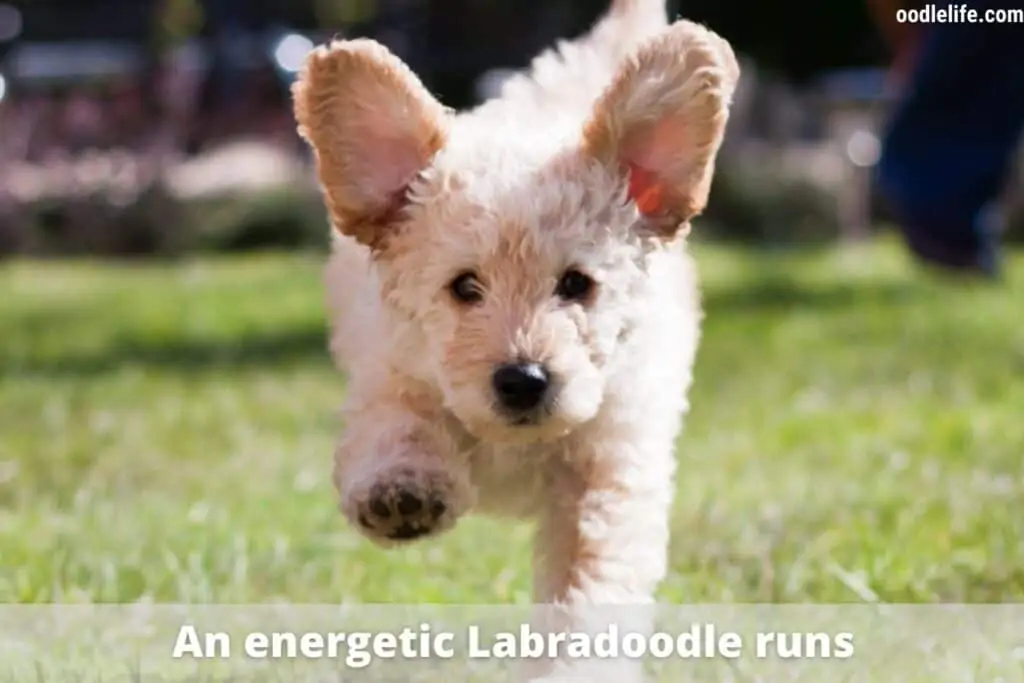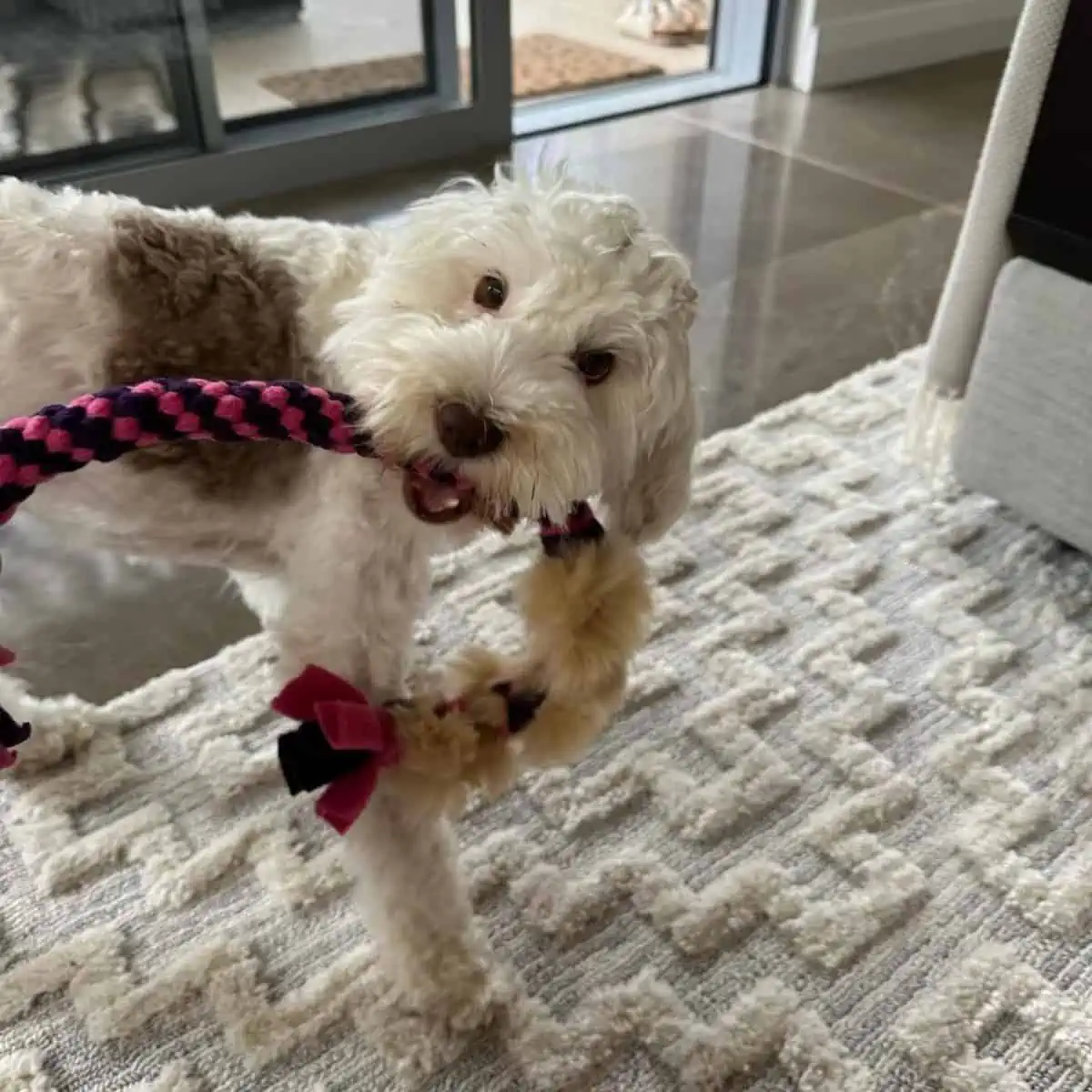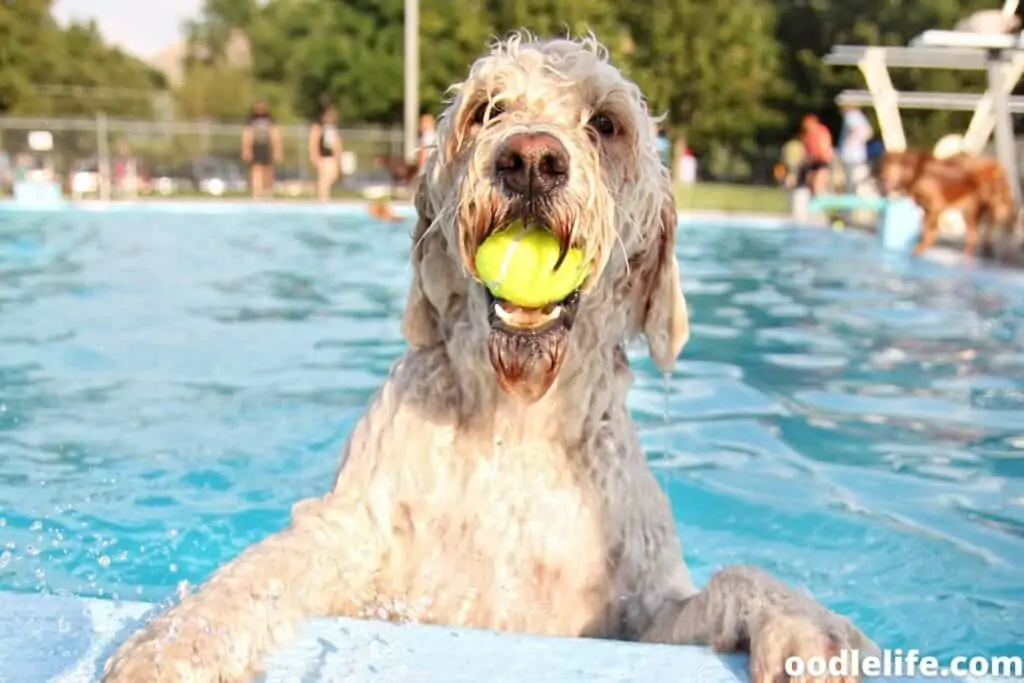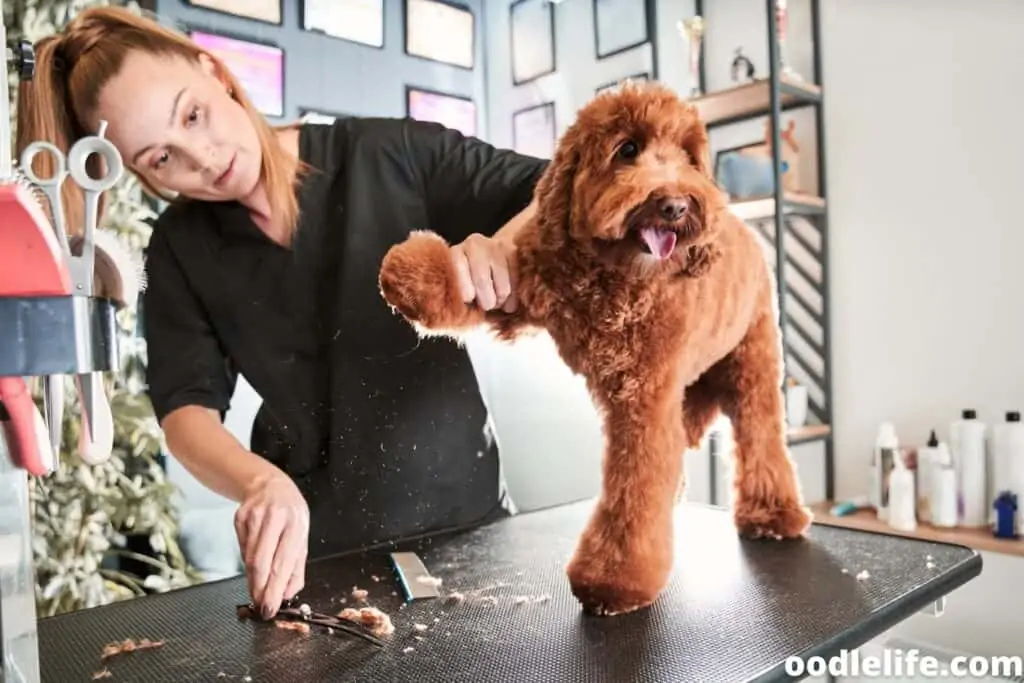What Age Do Labradoodles Calm Down?
Labradoodles are a particularly gentle but joyful and enthusiastic breed of dogs. Their exuberance and zest for life are only some of the ways in which they show their love and affection for you.
But as much as you are going to enjoy having a Labradoodle in your life, there will be times when you feel distressed and worn out. Labradoodles can be quite a handful, especially when they are young. They’re very energetic and playful, which can get out of hand very quickly
So, when and how do Labradoodles calm down? Are they easy or difficult to bring up? How should one be prepared to deal with them?

If you are paw-ssionate about bringing up your Labradoodles under the best conditions, keep reading to get all your questions answered.
At What Age Do Labradoodles Calm Down?
Is your Labradoodle chewing on the brand new sofa set? Do you hesitate to invite guests to your house because of your dog’s bouts of uncontrollable behavior? Are you struggling to keep up with your four-legged buddy’s energy and vivacity?
Don’t worry. Labradoodles are fluffballs of energy and can seem overwhelming to control. They are naturally known to have an optimistic and passionate outlook towards life. In their early stages as a puppy and adolescence, their energies are the most heightened and at their peak.
A Labradoodle is not considered fully grown until around there years of age, and this is when you can expect them to calm down.
But, when they begin to grow up, mainly between the ages of two and three, and enter adulthood, they tend to calm down and become relatively in control of themselves. However, if their erratic and crazy behavior is not looked into, they might continue being active and overly excited into their mature, senior years.

Labradoodle’s Life Stages
Typically, a Labradoodle has a life expectancy of 12 years where they undergo five different life stages — puppyhood, adolescence, adulthood, middle age, and old age. Let’s take a look at what you can expect from your furry companion at each stage.
1. Puppyhood
The first five months of your Labradoodle are their puppyhood phase. This is probably the most adorable stage of their life when they are still getting used to all the attention and affection.
They begin to form strong associations with people and objects, which is a prime reason why you might often find them active and hopping around in glee. This is also the best time to expose your babies to new experiences, train them through positive reinforcement, and bond with them.

2. Adolescence
Do you remember your adolescent years when you were either sleeping on the couch or were caught making mischief? Well, it isn’t much different with Labradoodles. The period of adolescence for a Labradoodle lasts for about two years, usually starting when the dogs are about 5 to 6 months of age.
At this stage, your Labradoodle is either bored and sleeping or hyperactive — there is no in-between. And, because this is the time when their hormones kick in, they are always jumping around, chewing everything that comes in their contact, and basically having the time of their lives.
3. Adulthood
Your dogs are finally fully grown and mature when they enter adulthood. This stage usually begins when the dog hits three years of age. At this stage, the most crucial aspect to look into is their diet and weight. If not correctly taken care of, your Labradoodle can become fat and unhealthy in no time.
If you trained your friend adequately during the first two stages of their life, you would start to observe a noticeable change in their behavior. Because they grow both mentally and physically, they are likely to become more calm and composed.

4. Middle Age
You should expect your dog to enter into the middle-age phase when they are about seven years old. But, the Labradoodle’s middle age will also largely depend on their size and other lifestyle factors.
Your dog will have both active and inactive days. They have transitioned into a mature stage of their life, so a drop in their excitement level is to be expected. As a pet parent, you must ensure to start taking care of their health and well-being a little more cautiously. They will become prone to developing common ailments and will require extra care and warmth.
5. Senior Age
When your dog hits the ripe old age of 10 to 12 years, they will enter the last, most crucial stage of their lives — old age. You will observe that your dog will considerably slow down and will develop habits that will be challenging to take care of.
However, this is also the stage when they need your most attention. This is the time for you to return all the years of unconditional love they have given you, and more.
It is also important to remember that the kind of Labradoodle you have will also impact their behavior and decide at what age exactly they will enter the stages we’ve described below. Do you have a standard, miniature, or toy cross?
The smaller breeds will mature quickly but live longer. And the older breeds will live a relatively shorter period.

Why Is Your Labradoodle Hyper?
Puppies of any breed are expected to act crazy and excited. They have a lot of pent-up energy and excitement inside them, and they are always finding ways to release that.
Labradoodles are considered more intelligent than most other dog breeds. They are very sharp and have excellent hunting abilities. This is one primary reason why they seek to learn and discover new things right from a very early stage.
They are curious creatures that love being out in open spaces. Now, if they are to be suddenly confined within the four walls of your house, they will obviously look for ways to release their energies inside the home. This often tends to make them more hyperactive and agitated than usual.
Here are a few other crucial reasons I can think of for your Labradoodle’s hyperactive behavior:
- Poor training, metabolic disorders, or genetic inheritance.
- If your labradoodle is a rescue dog, it is likely for them to be coping with past traumas or because they have been conditioned or bred to behave in this manner by their previous owners.
- Labradoodles tend to jump around in excitement when they are trying to grab your attention.
- The issue of hyperactivity in Labradoodles can stem from a lack of proper stimulation. If your dog gets bored of their daily routine and has nothing new and exciting to look forward to, they can become hyperactive and often display destructive behaviors.
- Lack of social interaction with other dogs and people around them can also make Labradoodles hyperactive.
- They might suffer from hyperkinesis or attention deficit hyperactivity disorder (ADHD).

Signs Of Hyperactivity In Labradoodles
If you want to hit the dog-parent jackpot, it is crucial that you keep your eye open to the following signs of hyper activeness in your furry friend before they turn into more serious implications:
- Even in familiar situations, you will find your dog overly excited and unable to relax.
- They will have a short attention span and will be unable to pay attention or concentrate on the smallest of things.
- They will display bouts of impulsiveness in their behavior.
- They will lack the ability to socialize with other people and pets around them.
- They will frantically move or fidget around. This includes running madly in circles, trying to catch their own tail.

Tips For Dealing With A Hyper Labradoodle
There is nothing in this world that your Labradoodles will appreciate more than your company, love, and affection. And an excellent way to display your love for them is by dealing with them with care when they are hyper and a little more excited and naughty than usual.
Here are several tips that you can follow to control your dog when they engage in uncontrollable behaviors.
Exercise
As a pet parent, it is vital to channel our dog’s energies in the right direction. This is where exercising comes into play.
Walking
You cannot keep your dog locked in the house the entire day. One walk per day is the least they require. You can take them to a nearby park or for mountain hikes; they will equally enjoy both.
Swimming
Labradoodles are water babies. They are bred from Poodles and Labradors, and both these breeds are excellent swimmers. Therefore, Labradoodles leave no chance to enjoy and play around in pools.
Outdoor games
Outdoor games work excellently in maintaining your dog’s agility. Play a game of fetch, a nose-work game, or the old and classic hide and seek — outdoor games add the element of fun to exercising, something your dog will be excited for every day.

Products
If you fear that you are going to lose your sanity over trying to bring up your dog (I’ve been there too), you can rely on products and tools that are specifically designed to cater to their hyperactive behavior.
Calming dog collars
They are designed to emit a scent that is similar to a mother dog’s pheromones. Many of these collars are packed with essential oils that help to calm a dog down when they are anxious.
Plush toys
The motive of plush toys is to eliminate the risk of separation anxiety that tends to develop in a dog. They are the ultimate cuddling buddies for your pets that provide comfort, aid, and keep them calm.
Calming beds
Lack of sleep tends to make dogs anxious and hyperactive. If you want to create a soothing environment for your Labradoodle where they can relax and calm themselves down, a calming bed would be a great choice. These beds are specially designed to provide your pet with a sense of security and safety.
Training
Training a dog is no joke. But, nothing comes even remotely close to the benefits that proper training can bring into you and your dog’s lives. It is the best way to instill good behavior in your Labradoodle, both physically and mentally.
- Teach your dog to carry themselves well and be in control of their emotions through reward-based training.
- Discourage their hyperactive behavior, but never punish them for the same. Understand that being hyperactive is a part of growing up. If you punish them and instill fear in them, they may never bond with you or emote themselves properly.
- Whenever you feel your dog is calmer than usual, make sure you encourage their behavior. Reinforce calmness in them by showing them affection and love. Reward them with their favorite treat every time they show good behavior.
Some Additional Tips:
- Maintain a set routine for your dog. Having a specific time set aside for eating, walking, or playing will help limit their energy to certain times of the day.
- Before you try to calm your labradoodle, make sure you manage yourself. You will only contribute to your dog’s excitement if you yourself are excited or hyper.
- Never yell, shout, scream, or show any anger or aggression toward your Labradoodle. This type of negative behavior will only make the situation worse.

So Why Choose A Labradoodle?
Even though handling a Labradoodle may feel like a lot of work, there are so many reasons why I believe Labradoodles are one of the best dogs to have. The joy of being a Labradoodle parent is unexplainable, and you can only know it by experience.
Labradoodles are incredibly friendly and social dogs; they even love swimming, making them great outdoor buddies! Labradoodles are also an excellent choice for those allergic to dogs as they are hypoallergenic and do not shed fur.
Not only that, Labradoodles make excellent therapy dogs for people who have autism, depression, or other mental or physical disparities. The sociable, loving, and empathetic traits make them one of the best candidates for therapy dogs.

Final Words
A calmer pet means a more relaxed you. I don’t want you to give up parenting your Labradoodle just because they are suddenly more excited. It is just a phase, and it too shall pass.
I hope you now have more clarity on what age Labradoodles calm down. And, if you have been struggling to keep up with your pup’s new zeal towards life, you also have the tools on how to overcome it.
Everything is paw-sibble with a bit of love and warmth.
Happy dog-parenting!